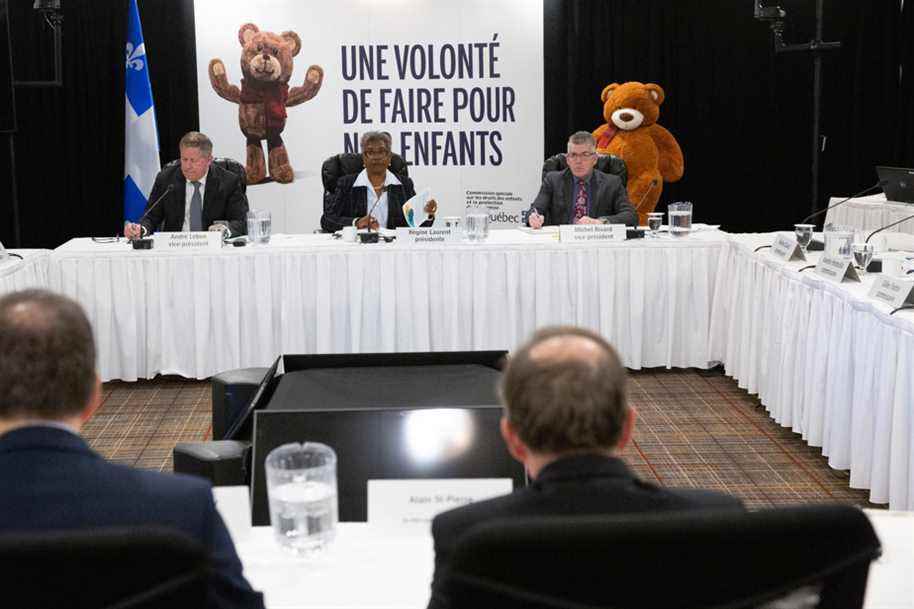In the near future, the National Assembly of Quebec will vote on amendments that many would like to be substantial to the Youth Protection Act. Already quacks are heard. The report would risk being shelved, with important recommendations remaining in limbo indefinitely.
Posted yesterday at 1:00 p.m.
The Youth Protection Act and the intervention system that underpins it, the DYP, have been the subject of a myriad of reports and legislative amendments since it came into force in 1979. Unfortunately, after each new report and series of amendments , we have witnessed the irresistible increase in reports and the lasting inability of the system to eliminate waiting lists, to intervene effectively, respecting deadlines and offering the intensity of intervention necessary to prevent the prejudicial situation from does not happen again.
So the multi-million question is, why should it be any different this time around? What if it was the very architecture of the system and some of the principles that underpin it that were at issue in its dysfunctions?
Despite its impressive consultation process, hundreds of stakeholders, experts, young people, parents heard, months of work, a few million dollars and more than 300 pages of analysis and recommendations, it emerges from the report of the Laurent commission an immense feeling of deja vu, already written, already heard. There is no doubt that there is a real diagnosis (one could even say “diagnoses”) in this voluminous report.
But make no mistake, this is essentially another tinkering effort with a law and a system that is going around in circles. By refusing to truly think “outside the box”, to change the paradigms of the system, we condemn ourselves to repeat the same errors.
Unfortunately, I believe that this is what awaits us, one of the reasons being that we have set up a system of principles of social intervention which are views of the mind. Among these, there is the concept of “threshold of protection” and that of so-called “first, second or third line” interventions. For a report to be retained or for a child to benefit from State protection, the situation must exceed a certain threshold of protection defined according to very specific criteria. Depending on the living conditions of a child at a given time, his situation may fall into or out of the youth protection system.
This concept of protection threshold is a construction from scratch by the players in the youth protection system. It did not exist in the law at the start and it was designed, in particular, as a barrier to the entry of youth protection, in the hope of saving a system literally besieged by requests for help. On a strictly human level, this concept is ineffective, because reality is much more complex. The relationship between a child and his or her parents or those who take their place are constantly in flux and are at one time or another on a continuum that goes from a harmonious relationship that contributes to development to a dangerous relationship that involves the notion of crimes against the person, as we saw in the situation of the little girl from Granby.
The reality would therefore be that when a concern emerges in a family, whether this concern comes from the parents or from third parties, it must give rise to an assessment, in certain cases multidisciplinary, and, if necessary, to an intervention adapted to each situation. . However, in the current system, the situation is not so simple, calls for help, reports, assessments are multiplying, while delays are getting longer and the intensity of the intervention is almost never meet.
Unfortunately, the concept of threshold goes hand in hand with that, just as narrow – in the social services in any case – of first, second or third line intervention.
Very large source of discontinuity in services and inefficiency, families’ situations being assessed repeatedly without services being offered at the right time, with the desired intensity.
By refusing to question these “sacred cows” of the intervention, we condemn ourselves to reliving Groundhog Day and repeating the same mistakes all over again.
What we should want is to fundamentally change the paradigm, by rewriting the law as a real law on child and family services. The words “help”, “childhood” and “family” are of primary importance here. This law could, of course, give rise to an intervention by the authorities, social or judicial, depending on the circumstances and what is necessary.
This new name is not only a semantic question, it is above all a change of philosophy in that it would go hand in hand with an intervention system which is no longer hierarchical between the first, second or third line. , a concept from the medical world that has never had its place in social services.
* The author has worked for over thirty years in youth protection services. He notably worked at the Commission des droits de la personne et des droits de la jeunesse, in addition to being the adviser to the former Minister of Youth Protection Véronique Hivon.

